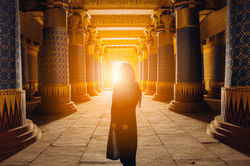MOROCCO
 |  |
|---|---|
 |  |
 |  |
 |  |
 |
Morocco awaits with Julia Shore, offering an enchanting blend of ancient traditions, vibrant street life, and breathtaking landscapes.
Our luxury small group tours and bespoke private tours are designed to unveil the magic of Morocco, from the bustling souks of Marrakech to the tranquil vastness of the Sahara Desert.
Experience guided tours through the historic medinas of Fez and the picturesque blue city of Chefchaouen, where every corner tells a story of centuries past.
Delve deeper into the Moroccan experience with our signature travel itineraries, which include culinary explorations, private desert camps under the stars, and encounters with local artisans.
Our tours are personally escorted by local experts, ensuring an immersive and authentic journey through this vibrant country.
From the rugged Atlas Mountains to the serene Atlantic coast, each day in Morocco is an adventure in luxury and discovery.








